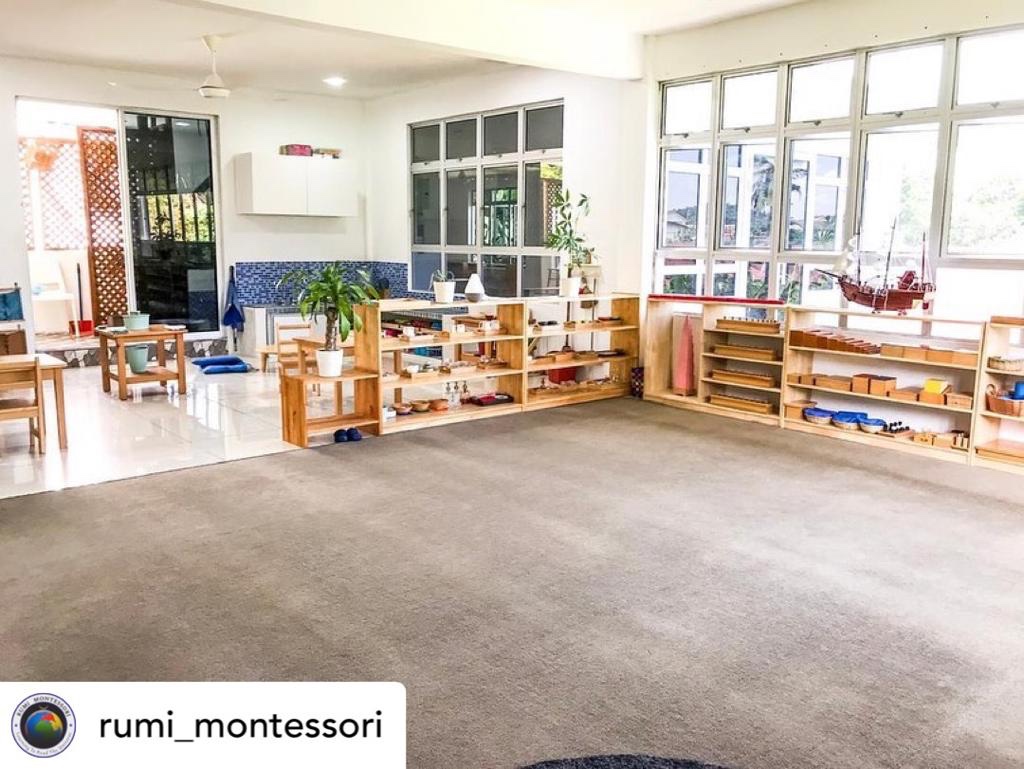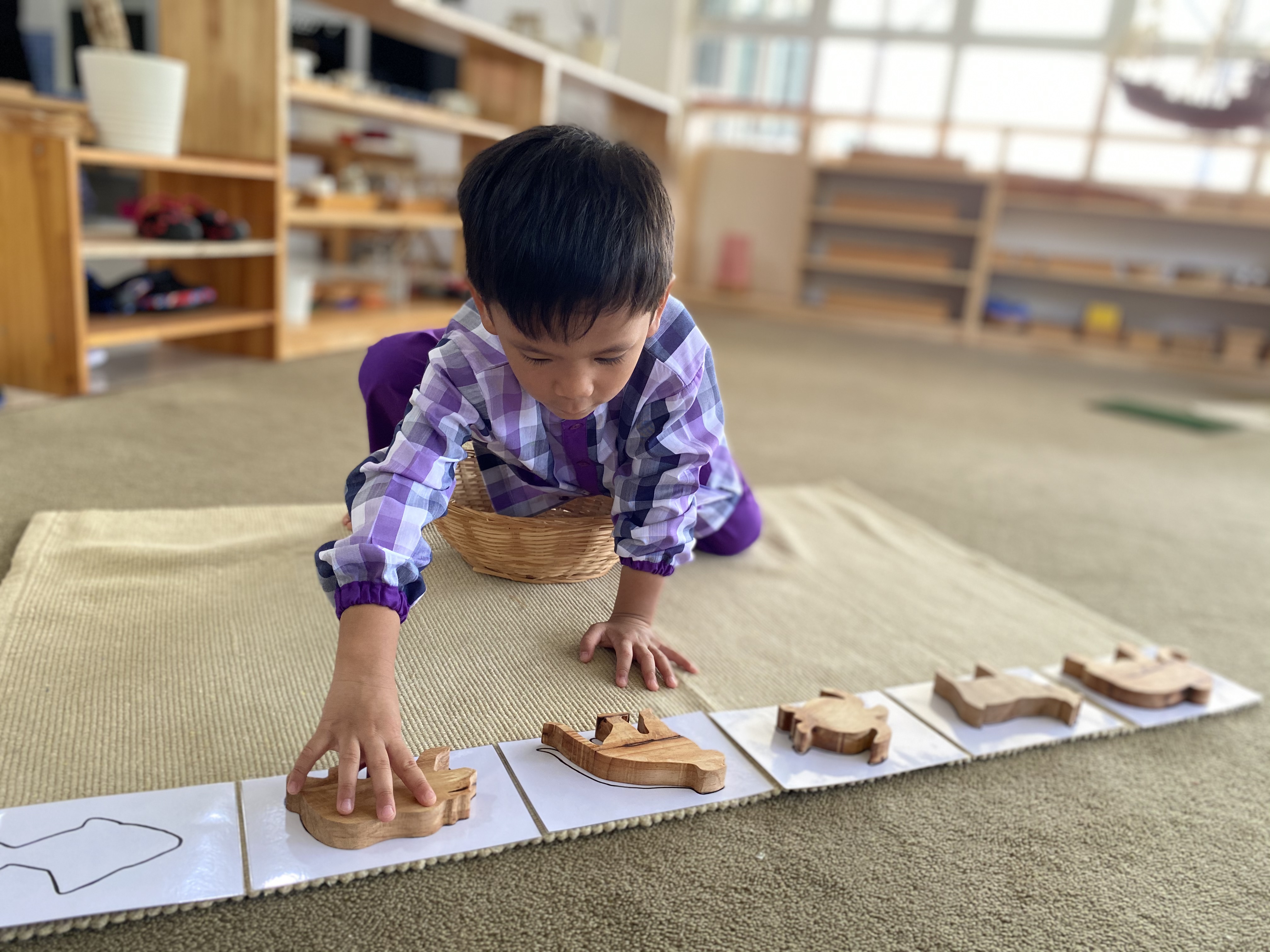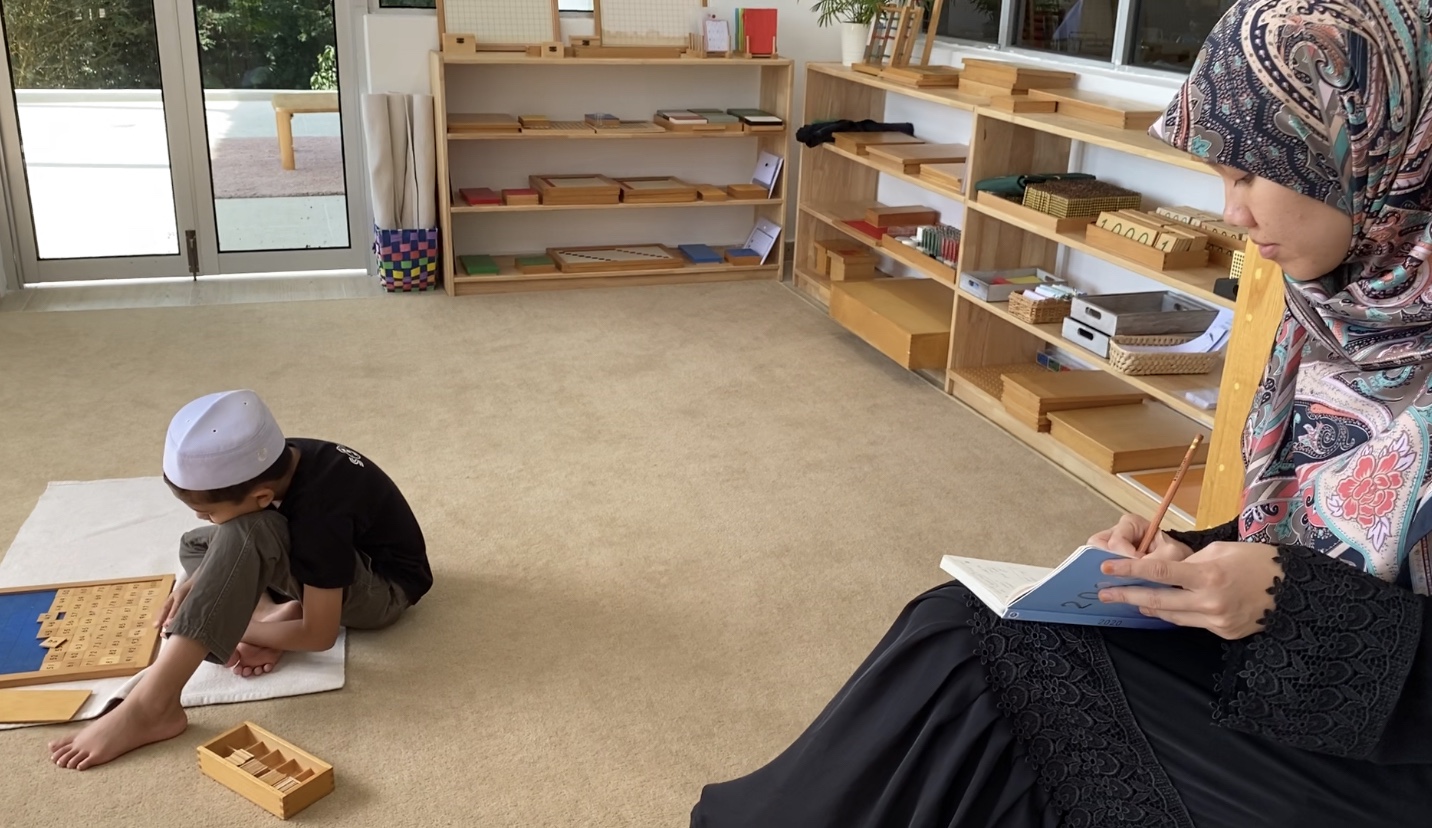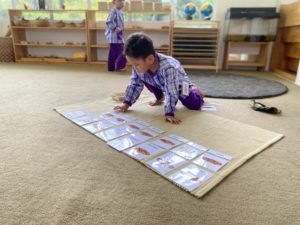Recently I posted about the new children settling in our Montessori 3-6 classroom and many of you contacted me for tips and advice on how to normalise a Montessori classroom.
Normalisation is a natural process with takes place in a child when they begin to intensively concentrate on an activity. Through concentration, the wanted and unsettled behaviours in a child will (magically) melt away.
Teachers don’t normalise children, it’s the children who normalise themselves through work. Our duty as teachers is to prepare the environment and invite/present the right activities that will capture the child’s interest and begin the process of normalisation.
If you are starting off a new classroom or settling new children, I recommend the following steps .

Step 1: Prepare the Environment
Before the school starts, make sure your environment is properly prepared with the materials and motives that will call the children to work. You want to have enough interesting materials that the child becomes captured by the work. Remember, many new children have not yet build extended concentration, they can only work on one thing for a short time. So make sure you set up plenty of quick activities that they’ll be successful doing themselves.

Usually in the first two weeks we add a ‘beginners’ shelf which contains puzzles, blocks, animals and simple activities which the child may already be familiar with at home. These activities don’t need to be presented and the child can take them at any time. We show them the shelf which contains them.
Step 2: Grace and Courtesy
Grace and courtesy is an essential part of the Montessori curriculum and should be taking place daily throughout the year. In these grace and courtesy sessions, we gather a small number of children and demonstrate positively the ‘how’ of everything in the classroom; how to push in your child, how to ask a teacher for help, how to walk in the classroom, how to interrupt someone who is talking…the list goes on.
During the first weeks of school, grace and courtesy will need to be done several times a day. Through these lessons the children develop a clear understanding of how they can interact with the environment and others.
Make sure your grave and courtesy is regular, consistent, focused on what the children actually need and consistently followed through during the session time.
Grace and courtesy is crucial for the settling of a class and children. Make it a top priority on you list and ensure it is happening daily in your classroom. I’ve visited far too many unnormalised classrooms, where during my observations I didn’t see a single grace and courtesy lessons.
Step 3: Observe the Children’s Interest

When you start a new classroom or are settling in new children, it’s easy to get stuck in the mindset of ‘I have to present everything’ to settle the classroom. New children do need lots of presentations in the first few days, however make sure you always leave time to observe the children. A presentation which is intentionally chosen base on an interest you’ve observed, is far more effective at inducing concentration than 5 random lessons you plan and present.
When you observe a child try to find out what materials and lessons interest them. You may notice them watching another child working, hovering at a particular shelf or observing you present to another child. Take notes of all these incidents and use them to inform your next lesson.
Step 4: Prepare Lots or Practical Life Activities

Make sure your practical life area is ready and exciting. Practical Life is the foundation for all other learning that takes place in the classroom and prepares the child for work in other areas. Often we observe deep concentration in children while working on practical life activities. Lessons like cutting apples, making orange juice, polish wood, cleaning windows capture the interest of the children and bring about a deep level of concentration.
Through this concentration, the process of normalisation with begin.
Step 5: Work Together as a Team!
I can’t stress this point enough, when you are working on normalising a classroom it’s essential that all team members work together, have good communication and are consistent in their practice. Make sure you set regular meeting times, daily in the first week, to discuss any issues that arise in the classroom and take a deeper look at each child.
Each team member has something valuable to contribute. Take the time to hear what others observed. Discuss and agree on all steps. Make sure everyone understands the procedures and agreed methods to guide the children.
Consistency is the key!



Very informative, thank you. I am going to look further into grace and courtesy.
How would you settle in children who may have come from another non Montessori setting?